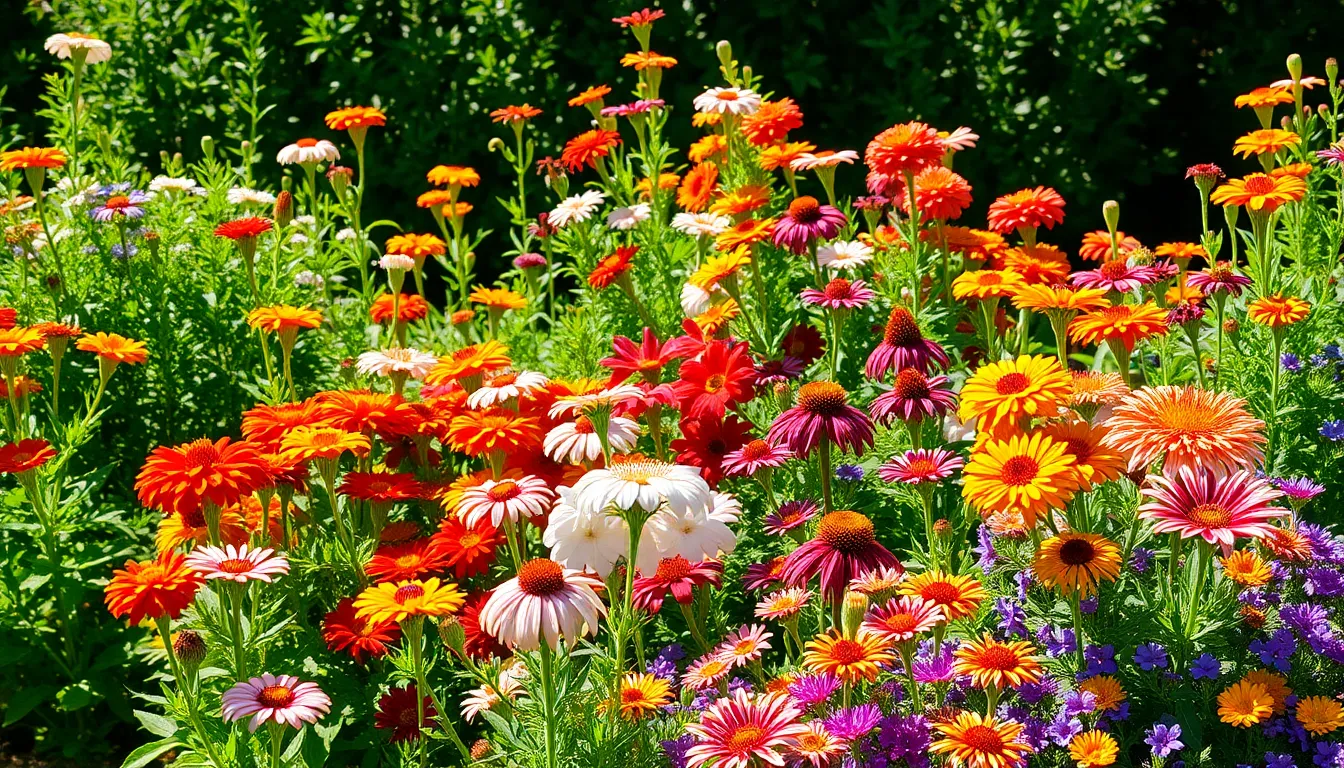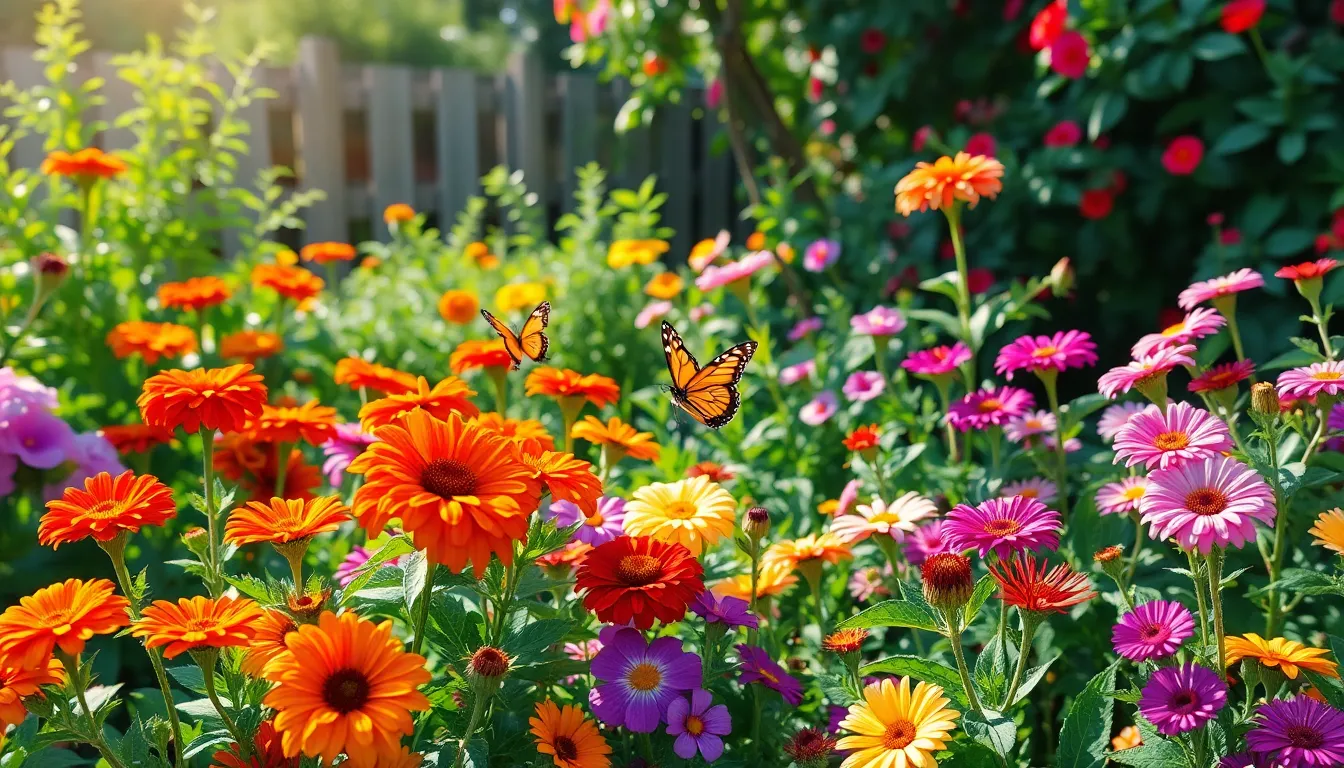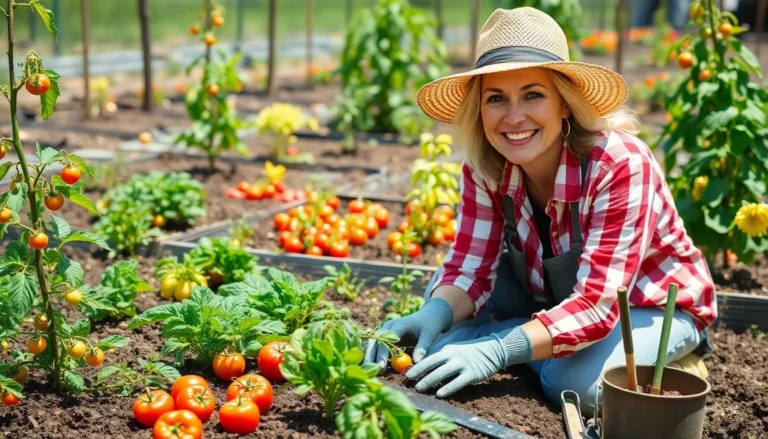Summer’s just around the corner, and it’s time to unleash the green thumb lurking within. Imagine stepping into your backyard oasis, surrounded by vibrant colors and the sweet scent of blooming flowers. Summer garden plants can transform any dull space into a lively retreat, making it the envy of the neighborhood.
summer garden plants
Summer garden plants offer vibrant colors and lush foliage that create an inviting atmosphere. These plants thrive in warm weather, favoring regions with plenty of sunlight. Many gardeners favor flowers like marigolds, petunias, and zinnias for their brightness and easy maintenance. Vegetables such as tomatoes, peppers, and cucumbers also flourish during the summer, providing fresh produce from the garden.
Consider incorporating herbs like basil, cilantro, and rosemary, which add flavor to summer dishes while complementing ornamental plants. Each plant has unique needs regarding water and soil, so research before planting. Hydration is crucial; expect to water plants regularly during the hot months to ensure they remain healthy.
Plant combinations can enhance visual appeal. Grouping plants with complementary colors and growth habits creates a stunning visual effect. Landscape designs can vary from formal gardens to casual, cottage-style plots, depending on gardening preferences.
Insects play a significant role in summer gardens. Pollinators like bees and butterflies thrive during this season, aiding in the reproduction of many plant species. These beneficial insects contribute to a healthy ecosystem, making it essential to minimize pesticide use.
Monitoring pests and diseases becomes vital as warmer weather encourages their activity. Routine checks help maintain plant health and prevent infestations. Choosing disease-resistant varieties can also reduce issues, ensuring a successful growing season.
Summer gardens serve as dynamic environments, encouraging creativity in plant selection. Utilizing a combination of flowers, vegetables, and herbs builds a vibrant setting, transforming outdoor spaces into beautiful retreats.
Choosing the Right Summer Garden Plants

Careful selection of summer garden plants enhances outdoor spaces. Understanding plant varieties aids in creating vibrant, healthy gardens.
Annuals vs Perennials
Annuals typically complete their life cycle in one season. Flowers like marigolds and petunias thrive in summer, making them popular choices for instant color. Perennials return year after year, providing long-term benefits. Options like echinacea and daylilies offer reliable blooms each summer. Each type serves a unique purpose, whether for quick impact or lasting presence. Selecting a mix can maximize visual appeal and garden longevity.
Sunlight Requirements
Sunlight significantly influences plant growth and health. Most summer garden plants require full sun, defined as six to eight hours of direct sunlight daily. Examples include tomatoes and zinnias, which flourish under bright conditions. Some plants tolerate partial shade, like impatiens and ferns, making them suitable for less sunny areas. Understanding specific light requirements ensures optimal growth and rich blooms throughout the garden. Assessing available sunlight helps gardeners make informed decisions for plant placement.
Popular Summer Garden Plants
Summer gardens thrive with a variety of vibrant selections. Understanding popular options enhances outdoor spaces.
Flowers
Petunias flourish with bold colors, making them ideal for borders or hanging baskets. Zinnias attract butterflies and provide enduring blooms throughout the season. Marigolds deter pests while introducing golden hues. Other favorites include sunflowers, which can reach impressive heights and offer dramatic visuals. Gardeners often choose these flowers for their easy maintenance and resilience against summer heat.
Vegetables
Tomatoes stand out as garden favorites, adapting well to warm weather and yielding plentiful fruit. Bell peppers, known for their sweet crunch, flourish in sunny spots and enhance both flavor and nutrition. Cucumbers provide refreshing snacks during hot days and offer sprawling vines that fill garden spaces. Squash varieties, like zucchini, also thrive and can be harvested regularly. These vegetables not only add flavor to summer meals but also encourage garden vitality.
Herbs
Basil, a must-have herb, complements summer dishes with its fragrant leaves. Cilantro grows quickly and offers a burst of flavor in salsas and salads. Rosemary enhances culinary creations while thriving in sunny locations. Other popular choices include parsley and mint, which add freshness to various dishes and drinks. Herbs not only elevate culinary experiences but also attract beneficial insects, contributing to garden health.
Care and Maintenance for Summer Garden Plants
Maintaining summer garden plants requires focused care to ensure their health and vibrancy. Effective strategies include proper watering techniques, appropriate fertilization, and vigilant pest management.
Watering Techniques
Watering requirements vary among summer plants. Established plants typically need deep watering once a week, while newly planted ones might require more frequent hydration. Morning is the ideal time for watering, as it reduces evaporation and allows foliage to dry before evening, minimizing disease risks. Applying mulch around plants helps retain soil moisture and regulates temperature. Drip irrigation systems can deliver consistent moisture directly to the roots, promoting healthy growth.
Fertilization Tips
Fertilization plays a critical role in plant health during summer. Gardeners should use a balanced, slow-release fertilizer to provide essential nutrients over time. Applying fertilizer at the beginning of the growing season sets the stage for robust development. Liquid fertilizers offer an immediate nutrient boost, effective for plants showing nutrient deficiency. Regular soil testing ensures the right nutrient levels, helping to prevent over-fertilization, which can harm plant health.
Pest Management
Pest management remains essential in protecting summer gardens. Regular monitoring for common pests, such as aphids and caterpillars, allows for early intervention. Natural predators, like ladybugs, can effectively control pest populations without chemicals. When necessary, organic insecticides serve as a viable option to reduce harm to beneficial insects. Keeping plants healthy through proper care lowers the likelihood of infestations, creating a thriving garden ecosystem.
Conclusion
Embracing summer garden plants offers a unique opportunity to create a vibrant outdoor sanctuary. With the right selection of colorful flowers vegetables and herbs gardeners can enhance their spaces while enjoying the beauty of nature.
By understanding the specific needs of each plant and combining them thoughtfully it’s possible to cultivate a thriving garden that not only pleases the eye but also supports local ecosystems. Regular care and attention ensure these plants flourish throughout the summer months.
With creativity and dedication anyone can transform their backyard into a lively retreat that brings joy and satisfaction all season long.




